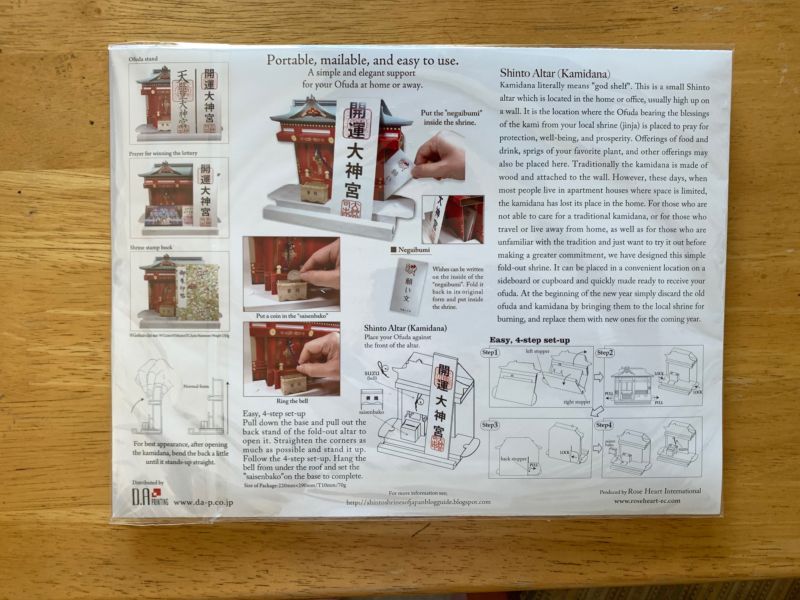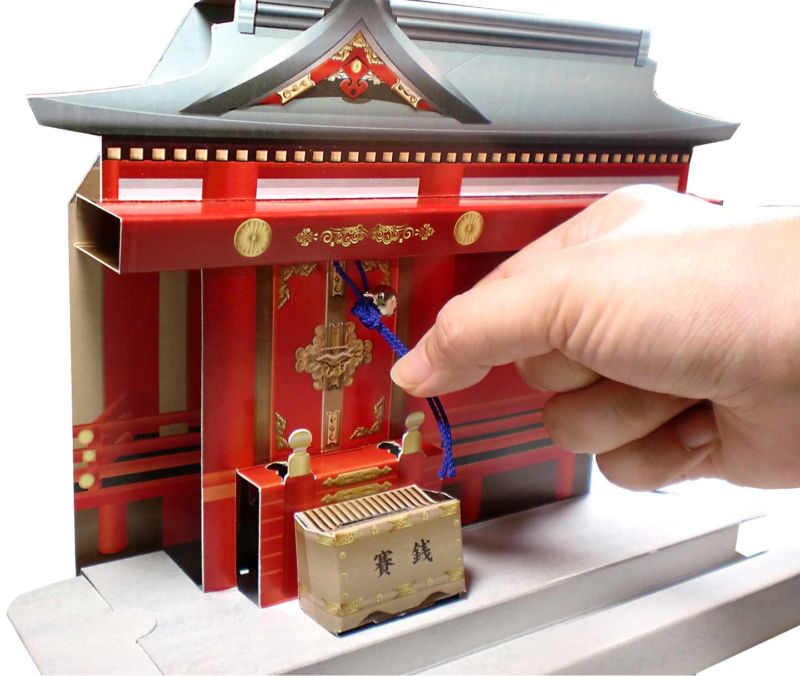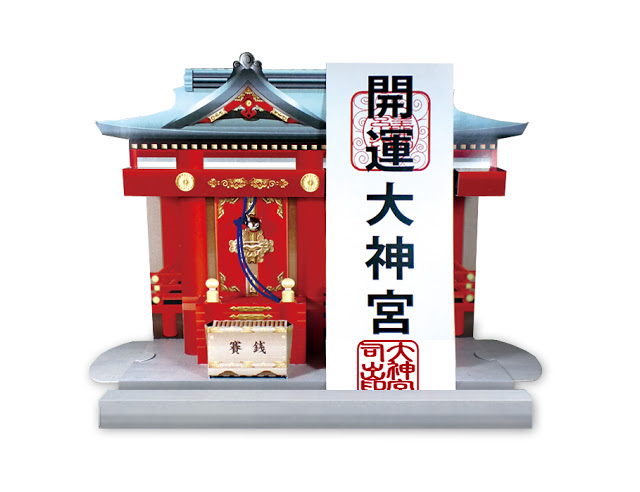Back from an extended summer vacation, I found at home in Kyoto an intriguing A4 size envelope awaiting me from my old friend Joseph Cali. Inside was an attractive thin package announcing itself as a Kamidana (Shinto altar).

Looking at it, I could see the makings of a cardboard shrine, a paper ofuda (talisman), a bell with string attached, and even a fold-out collection box. It all looked most appealing. “Instructions for set-uo and use, on the back panel,’ it announced. So I turned it over….

‘Portable, mailable, and easy to use,’ it announces. ‘A simple and elegant support for your Ofuda at home or away.’ There were pictures too of how to assemble the shrine in an easy 4-step set-up. Eager to see how it works, I set about setting up the house shrine.

With the bell and collection box in place, however, there still remained a couple of important items. One of course was the paper ofuda, which is to be placed against the front. The other less visible item was a wish paper called ‘negaibumi’ which is placed inside the shrine.
This clever piece of craftsmanship owes itself to the collaboration of a Japanese designer with an American who has great expertise in Shinto matters, namely the author of Shinto Shrines, Joseph Cali. He not only has ties with Jinja Honcho, but for his book published by the Uni of Hawaii Press he visited and met with priests from over 60 major shrines. Here is what he has to say by way of introduction to the product.
Most readers know that a kamidanaor “God Shelf” is a small, Shinto altar for the home, office, or place of work.Usually made of wood and attached to a wall near the ceiling it was once ubiquitous in Japan. However, these days, when most people live in apartments, where attaching anything to the wall is restricted, move frequently, or live away from home for long periods of time due to work requirements, the kamidana has all but disappeared. Still, many people frequent the local shrine, particularly at New Year’s, and purchase ofuda for the home, then have no place to properly keep them. For people in these situations, as well as for foreign visitors with a keen interest in Shinto, the Portable Kamidana Jinja is an excellent solution.
Simply follow the easy instructions to unfold the kamidana, and set it up in on a shelf or cabinet. No tape or glue needed. Then place your ofuda in the position provided. Now you are set to offer a silent prayer to the kami and receive its blessings. If you would like to send the Portable Kamidana Jinja as a gift, it slips conveniently into an A4 size envelope. You can also collapse the Kamidana and reset it any number of times.
The Portable Kamidana makes an excellent gift as well. Made of heavy weight paper and beautifully printed, it presents a formal appearance appropriate to the task of supporting the ofuda. Please keep in mind that the sample provided with the kamidana, is not an actual ofuda, and should not be displayed. Also note that some ofuda may be very long and not easily supported. The sample ofuda depicted here is 190mm tall but up to 250mm is fine.The Portable Kamidana Jinja costs 2,500 yen plus 200 yen tax (price includes shipping within Japan). You can pay through paypal internationally or furikomi within Japan. For further information or orders, contact hitsugi101@yahoo.com.
(Taken from the excellent Shinto Shrines of Japan: The Blog Guide. http://shintoshrinesofjapanblogguide.blogspot.com/). The blog is an accompaniment to Shinto Shrines: A Guide to the Sacred Sites of Japan’s Ancient Religion, published by Univ of Hawaii Press, 2013.

